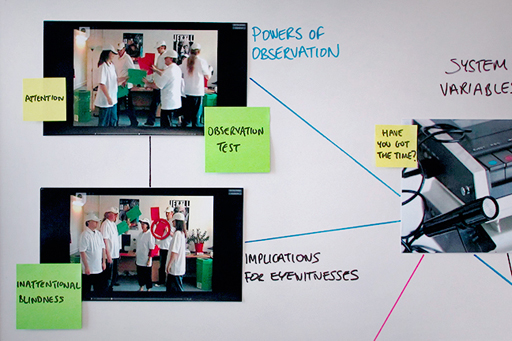1.1 Gorilla in the midst

Did you spot the giant mouse in the ‘Observation test’ video? If you didn’t, watch the video again but this time do not try and follow the folder. Don’t worry if you didn’t spot the giant mouse the first time, a great many people fail to notice it. Psychologists refer to the inability to attend to something fairly significant that happens right in front of you as ‘inattentional blindness’.
The amazing thing about inattentional blindness is that your mind can perceive what is happening perfectly well, but you do not attend to it. In other words, your eyes can see the mouse and your brain can process and interpret what your eyes are seeing, but for some reason you do not attend to this information and so are not conscious that it is there.
Probably the best known demonstration of inattentional blindness comes from a study by Simons and Chabris (1999) known as the ‘gorilla in the midst’. Our giant mouse video is in fact a recreation of the stimuli used in that study. Simons and Chabris (1999), asked participants to watch a film that began with two teams of players (one wearing white shirts and the other black) each passing a ball between the members of their team. The participants were asked to count how many times the members of one of the teams passed the ball. About 45 seconds into the film, a woman wearing a gorilla costume enters the scene from the left, walks through the teams of players and exits to the right. Overall, just 44% of participants noticed the woman in the gorilla suit. This means that over half of the participants must have seen the gorilla (in that they were looking at the screen when she appeared) but failed to attend to it, with the result that they did not even notice it.
The power of the inattentional blindness effect has implications for eyewitnesses viewing a crime. For example, if participants are too fixated on a folder to notice a giant mouse, eyewitnesses might be too fixated on one part of the crime to notice something significant happening elsewhere. Before looking at the implications of inattentional blindness, we’ll explore an interesting research tool that has been used to study the phenomenon.
The original video used by the researchers can be seen here.
